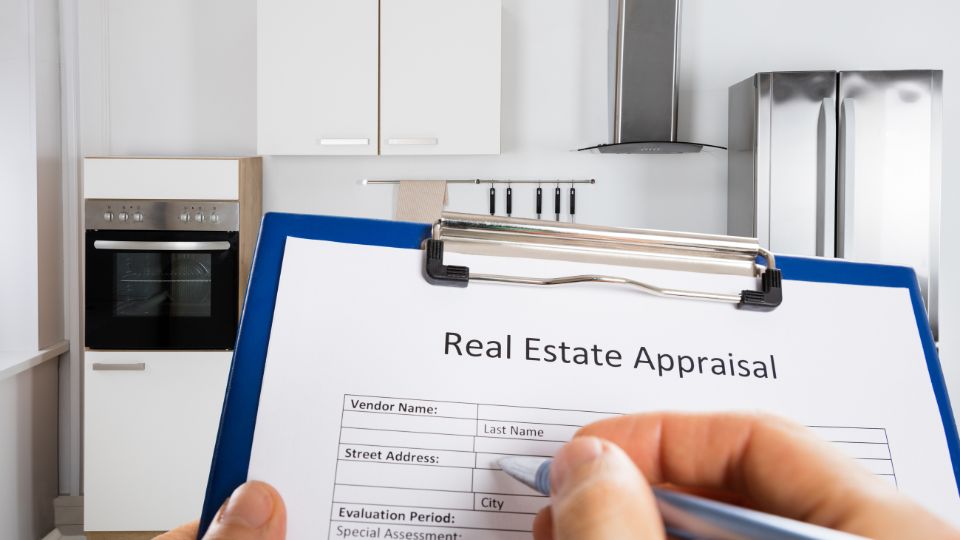As retail prices and inflation continue to rise, many consumers and homeowners are finding that home equity lines of credit (HELOC) are the best option for getting much-needed cash. Although prices of gas, groceries, and other consumable items are increasing rapidly, so are the valuations of homes. In many cases, homeowners have been able to gain much more equity in their homes than they ever thought possible.
One option to get cash is to sell the home and start renting. Anecdotal evidence suggests that there is a small subset of homeowners who have chosen this path. However, most homeowners would prefer to continue living in their homes if at all possible. This is where the HELOC shines as the best option for converting their higher home valuations into cash.
A HELOC is a type of loan that allows homeowners to borrow against the equity they have built up in their homes. Unlike a traditional loan, which provides a lump sum of money upfront, a HELOC gives borrowers a revolving line of credit that they can draw from as needed. This makes it a flexible option for those who have ongoing consumer expenses, such as home renovations or college tuition.
HELOCs are secured loans, meaning that they are backed by collateral – in this case, the borrower’s home. Because of this, HELOCs often have lower interest rates than other types of loans, such as personal loans or credit cards. Additionally, the interest on a HELOC may be tax-deductible, making it an attractive option for those looking to save money on their taxes. However, it is important to note that HELOCs also come with risks – if the borrower is unable to make payments on the loan, they risk losing their home.
Understanding HELOC Loans
Key Features
HELOCs have several key features that make them different from other types of loans. First, they are revolving lines of credit, which means that borrowers can draw on them as needed, up to a certain limit. Second, the interest rate on a HELOC is typically variable, which means that it can go up or down over time. Third, the borrower is only required to make payments on the amount of money they have actually borrowed, not the full amount of the credit line.
How HELOC Loans Work
HELOCs are similar to credit cards in that they are revolving lines of credit. Borrowers are given a credit limit, and they can draw on the line of credit as needed. As they make payments on the amount they have borrowed, the credit becomes available again. The interest rate on a HELOC is typically tied to the prime rate, which means that it can go up or down over time.
Borrowers are typically required to make interest-only payments during the draw period, which is the time during which they can draw on the line of credit. Once the draw period ends, borrowers are required to make principal and interest payments, which means that the payment amount will increase. HELOCs typically have a draw period of 10 years, followed by a repayment period of 10 to 20 years.
Overall, HELOCs can be a useful tool for homeowners who need to borrow money. However, they do come with risks, so borrowers should be sure to understand the terms of the loan before signing on the dotted line.
Eligibility and Requirements
Qualification Criteria
To qualify for a Home Equity Line of Credit (HELOC), a borrower must meet certain requirements. Lenders typically require borrowers to have a credit score of at least 620, although some lenders may require a higher score. The borrower must also have a debt-to-income ratio of 43% or less. In addition, the borrower must have a minimum of 15% to 20% equity in their home.
Necessary Documentation
To apply for a HELOC, borrowers must provide documentation that proves their income, assets, and other financial information. This documentation may include:
- Proof of income, such as pay stubs or tax returns
- Proof of assets, such as bank statements or investment account statements
- Proof of homeowners insurance
- Proof of property taxes paid
- Proof of mortgage balance and payment history
In addition, borrowers may need to provide additional documentation depending on the lender’s requirements. It is important to check with the lender to determine what documentation is necessary.
Overall, borrowers must meet certain qualifications and provide the necessary documentation to be eligible for a HELOC. By meeting these requirements, borrowers can access the equity in their home and use the funds for various purposes, such as home improvements or debt consolidation.
Comparing HELOCs with Other Loans

HELOCs vs. Home Equity Loans
HELOCs and home equity loans both use the borrower’s home equity as collateral. However, they differ in their payment structure and interest rates. Home equity loans are structured like traditional mortgages, with a fixed interest rate and a set payment schedule. On the other hand, HELOCs are more like credit cards, with a variable interest rate and a revolving line of credit that the borrower can draw from as needed.
One advantage of a home equity loan is that the borrower knows exactly how much they will pay each month, which can make budgeting easier. However, a HELOC can be more flexible, as the borrower only pays interest on the amount they have borrowed. HELOCs can also have lower initial interest rates than home equity loans, making them a good choice for borrowers who need to access their home equity in the short term.
HELOCs vs. Personal Lines of Credit
Personal lines of credit are unsecured loans that can be used for any purpose. Like HELOCs, they offer a revolving line of credit that the borrower can draw from as needed. However, personal lines of credit typically have higher interest rates than HELOCs, since they are not secured by collateral.
Another difference between HELOCs and personal lines of credit is that HELOCs are specifically designed to help borrowers access their home equity. This means that HELOCs can offer larger credit lines than personal lines of credit, since the amount of credit available is based on the value of the borrower’s home. However, personal lines of credit can be a good choice for borrowers who do not have significant home equity or who need access to funds for non-housing-related expenses.
Related: The Top 10 Types of Home Loans
Application Process

HELOC Loans are a popular way to borrow money using the equity in your home. The application process for a HELOC Loan can be similar to that of a mortgage, but there are some key differences. This section will walk you through the steps to apply for a HELOC Loan and help you understand the timeline for the process.
Related: 2024 Foreclosure Trends Increase, But Refinances Gain
Steps to Apply
- Research and compare lenders: The first step in applying for a HELOC Loan is to research and compare lenders. Look for lenders that offer competitive interest rates, low fees, and flexible repayment terms. You can use online comparison tools to help you find the best lenders.
- Check your credit score: Your credit score will play a big role in whether or not you are approved for a HELOC Loan. Check your credit score before you apply and take steps to improve it if necessary.
- Gather your financial documents: Like with a mortgage application, you will need to provide financial documents when you apply for a HELOC Loan. These may include tax returns, pay stubs, and bank statements.
- Submit your application: Once you have found a lender and gathered your financial documents, you can submit your application. Most lenders allow you to apply online, but you can also apply in person or over the phone.
- Wait for approval: After you submit your application, you will need to wait for approval. This can take anywhere from a few days to a few weeks, depending on the lender and the complexity of your application.
The timeline for a HELOC application can vary depending on the lender and the borrower’s financial situation. However, there are some general timelines to keep in mind.
- Pre-approval: Many lenders offer pre-approval for HELOC Loans. This means that the lender will give you an estimate of how much you can borrow based on your financial information. Pre-approval can usually be done quickly, often within a day or two.
- Processing: Once you have submitted your application, the lender will begin processing it. This can take anywhere from a few days to a few weeks, depending on the lender and the complexity of your application.
- Underwriting: After your application has been processed, it will go through underwriting. This is when the lender will review your financial documents and make a final decision on whether or not to approve your application. Underwriting can take a few days to a few weeks.
- Closing: If your application is approved, you will need to close on the HELOC Loan. This is when you will sign the loan documents and the lender will disburse the funds. Closing can take a few days to a few weeks, depending on the lender and the complexity of the loan.

Risks and Considerations
When considering a Home Equity Line of Credit (HELOC), it is essential to be aware of the potential risks and factors that should be taken into account before making a decision. Two critical aspects to consider are the variability of interest rates and the repayment terms.
Interest Rate Variability
One of the primary risks associated with a HELOC Loan is the variability of interest rates. HELOC Loans often have variable interest rates, meaning that the interest rate can fluctuate over time based on market conditions. This can lead to uncertainty in monthly payments and potentially higher interest costs over the life of the loan.
Repayment Terms
Another consideration is the repayment terms of a HELOC Loan. Borrowers should carefully review the repayment terms, including the draw period and the repayment period. During the draw period, borrowers can access the funds, typically up to 10 years, while the repayment period follows, during which borrowers must repay the outstanding balance. Understanding the repayment terms is crucial to avoid potential financial strain in the future.
It is essential for individuals considering a HELOC Loan to thoroughly assess these risks and considerations before proceeding with this type of financing.
How to Find Lenders Offering HELOC Loans
During the pandemic, a few of the major US Banks stopped HELOC lending altogether. They cited the uncertain employment market as a reason to withdraw from this type of lending activity. However, there are still plenty of banks, both large and small, who are actively providing HELOC loans.
Mortgage Brokers can also offer a wide range of lenders that offer HELOC loan programs. Each lender follows their own underwriting guidelines. In order to find the right fit, it would be best to do some research prior to taking the first offer.
More Resources about HELOC Loans
- FTC: For a comprehensive understanding of your rights and responsibilities with HELOCs, the Federal Trade Commission offers valuable consumer information.
- IRS: Understand the tax implications of your HELOC with the IRS’s detailed guide on the tax deductibility of HELOC interest.
- Major Banks: Bank of America HELOC Loan and US Bank HELOC Loan

Frequently Asked Questions
Understanding the Timeline
How is the repayment process structured for a HELOC Loan?
Repayment for a HELOC Loan is structured differently from a traditional loan. A HELOC is an open-end loan, which means that instead of borrowing a set amount of funds all at once, you withdraw and repay as needed. During the draw period, which is usually the first 5-10 years of the loan, you can withdraw funds as needed up to your credit limit. You will only be required to make interest payments during this period. After the draw period ends, you will enter the repayment period, which is usually 10-20 years. During this period, you will be required to make principal and interest payments.
What factors contribute to obtaining the best interest rates on a HELOC?
Several factors contribute to obtaining the best interest rates on a HELOC Loan. These include a good credit score, a low debt-to-income ratio, a low loan-to-value ratio, and a good payment history. The interest rate on a HELOC Loan is usually variable, which means it can fluctuate over time. It is important to shop around and compare rates from different lenders to find the best deal.
What are the potential drawbacks to taking out a Home Equity Line of Credit?
One potential drawback to taking out a HELOC is that your home is used as collateral for the loan. This means that if you are unable to make payments, you risk losing your home. Another potential drawback is that the interest rate on a HELOC is usually variable, which means it can fluctuate over time. This can make it difficult to budget for your monthly payments.
Can one still qualify for a HELOC Loan with a less-than-ideal credit score?
It is possible to qualify for a HELOC with a less-than-ideal credit score, but it may be more difficult to obtain a good interest rate. Lenders will look at your credit score, debt-to-income ratio, and loan-to-value ratio when determining whether to approve your application and what interest rate to offer you.
What are the typical terms and conditions associated with a HELOC from major financial institutions?
The terms and conditions associated with a HELOC can vary depending on the lender. However, some common terms and conditions include a variable interest rate, a draw period of 5-10 years, a repayment period of 10-20 years, and a minimum credit score requirement of 620. It is important to read the terms and conditions carefully and understand the fees associated with the loan, including any annual fees, closing costs, or prepayment penalties.
How do monthly payments vary based on different HELOC Loan amounts?
Monthly payments for a HELOC vary based on the amount of the loan and the interest rate. During the draw period, you will only be required to make interest payments. After the draw period ends, you will enter the repayment period, during which you will be required to make principal and interest payments. The amount of your monthly payment will depend on the amount of the loan, the interest rate, and the length of the repayment period. It is important to budget for your monthly payments and understand how they will change over time.





